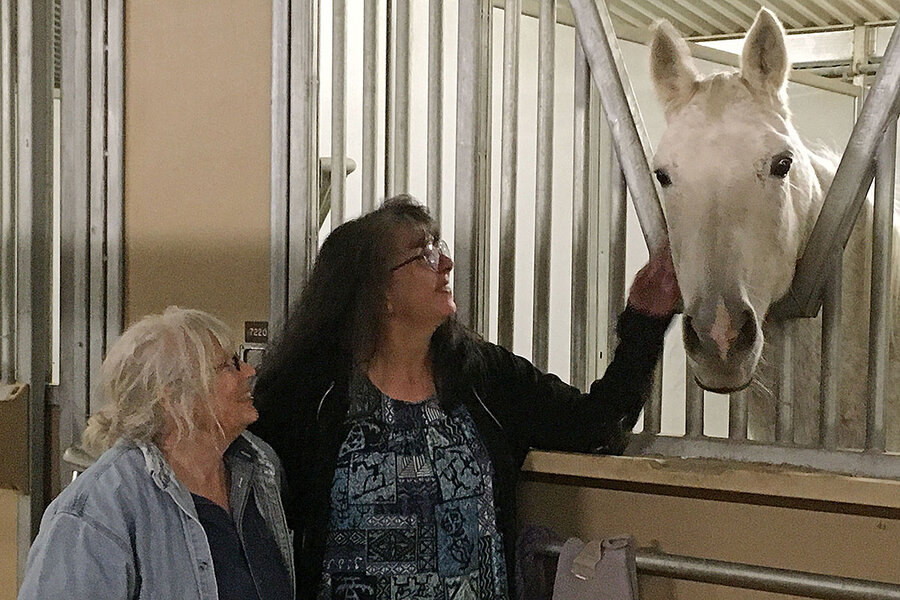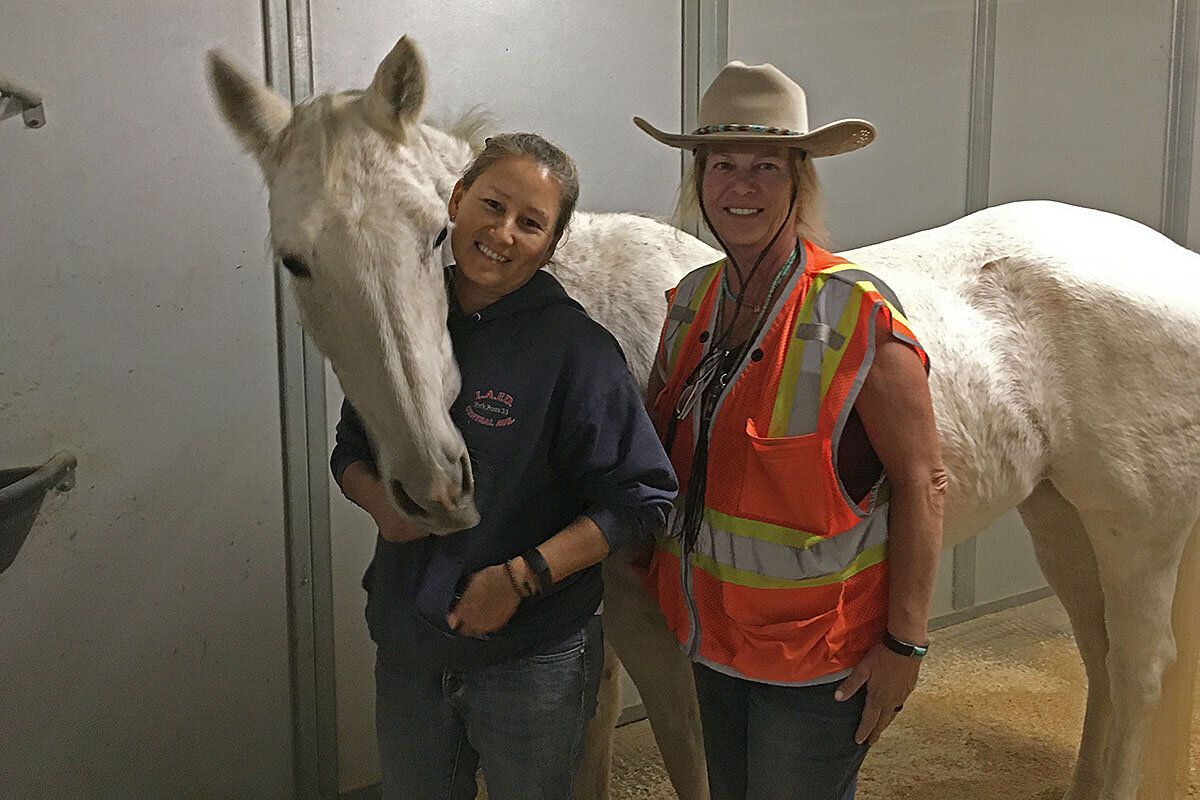When wildfire strikes, an army of animal lovers rushes to action
Loading...
| Woodland Hills, Calif.
When weather forecasters in Southern California sent out an “extreme” fire warning starting Tuesday night, Patricia Rendon did not wait for the flames to arrive.
She called her longtime friend Pam Sakaida in Topanga, California, on whose property she is boarding her horse, Pepper. Given the forecast of hurricane-force gusts, and that the evacuation zone from the Getty fire in Los Angeles was moving toward Topanga, they decided to evacuate her gray mare. Same for Santana, Ms. Sakaida’s older horse, whom Pepper keeps company.
“If you wait till it’s too late, you risk not only your life but theirs, and driving a trailer with shavings or flammables on it is like driving a bomb down the road if you’re going through flames,” says Ms. Rendon. “You want to do it when you’re calm, so you can quietly load them on the trailer and quietly unload them.”
Why We Wrote This
Wildfires threaten not just people and their homes. Animals, too, need refuge from the flames. Happily, for the horses – not to mention pigs, alpacas, and tortoises – a network of animal rescuers is ready to help.
By dinnertime on Tuesday, well before fierce winds whipped up a new fire near the Ronald Reagan Presidential Library on Wednesday morning, the friends’ horses were settling in to the large and clean stalls here at the equestrian center at Los Angeles Pierce College in Woodland Hills. For years, the community college has opened its facilities to large and other farm animals during emergencies. Los Angeles County Animal Care and Control manages and funds the shelter during emergencies.
The mountains around Los Angeles are horse country, and like people, large animals need to be prepared for possible evacuation. But unlike their biped caregivers, they can’t be accommodated in school gymnasiums or church fellowship halls. And they are much harder to move in an emergency.
“You can’t get these guys out in a hurry,” says Ms. Rendon. “If you’re panicking, they panic. They will feed off all that’s going through your hands, through your body, your voice, everything.”
With fires burning up and down California, owners are taking their animals to special evacuation centers at county fairgrounds or facilities such as this one northwest of downtown LA. Pierce College has a 225-acre farm that can take up to 150 large animals, says Doreen Clay, the college’s public relations manager. The shelter filled up this week, but on Thursday, owners were contacted to pick up their animals. Evacuation orders had been lifted.
During emergencies, the college has taken in horses, cows, llamas, alpacas, giant tortoises, pigs, sheep, goats, and chickens. Cats and dogs go to the local animal shelter.
It can be a peaceful place – until a mandatory evacuation. “Then you see a ton of activity,” says Ms. Clay. “Then the county and the sheriffs will go out with big trailers. They’ll round up horses.”
An equestrian subculture also leaps into action. Volunteers with trailers near and far drive to afflicted areas, offering to help. They coordinate via social media, for instance, on the Southern California Equine Emergency Evacuation site on Facebook. With embers flying in smoky conditions at the scene, they also coordinate the old-fashioned way, through hand-held radios.
Stacey Goldstein, who brought her miniature mule and red dun quarter horse to Pierce, recalls a friend in last year’s destructive Woolsey fire.
Caught by surprise, the friend tied her horse to a rope, having it follow alongside as she drove her SUV away from the flames. They eventually encountered a trailer full of horses that could squeeze in one more. Ms. Goldstein was not taking any such chances, bringing in her animal family early, but she fretted because she was not able to coax her donkey, Sophie, to come.
Inside Barn No. 1 at Pierce, Santana is pacing his stall, whinnying – or calling. He’s anxious, says Yumi Sakaida, Pam’s daughter. This makes the Sakaidas doubly grateful for the professional care provided by volunteers at the barn, which they call their safe place. “It’s great to have people here who know how to relax the animals,” says Yumi – and put at ease the owners who bring them in.
Those are people like Megan Silveira, a longtime volunteer who stays at the site 24/7 during emergencies, and Eric Cohen, who attended the college and now lives in the area. Mr. Cohen happily feeds, waters, hauls hay bales, and mucks stalls. But he says they can use more volunteers, who must be trained and certified by Los Angeles County Animal Care and Control.
As Ms. Goldstein heads home to check on her donkey, she asks Mr. Cohen the schedule for the evening.
“We’re doing the turndown service at about 9 o’clock,” he grins.
No chocolates on the pillows, though.
Editor’s note: This story has been updated to correct the name of Stacey Goldstein’s donkey. It is Sophie.







